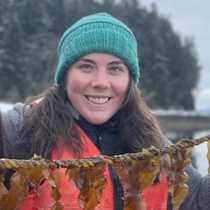Southeast Alaska is a land shaped by ice. Parts of this area were under hundreds or thousands of feet of ice only decades prior. Glaciers bore down out of the mountains during the last mini ice age, reaching their maximum length four centuries ago. These rivers of ice scour the land down to the bedrock as they move and when they retreat or melt off, they leave an environment set back to the starting point. Life follows the ice as it retreats; colonizing lichens and plants create the first patches of green near the ice, nitrogen-fixing Sitka alders make the soil more habitable for the larger conifers. Once the trees return, so do the animals and birds of the Tongass National Rainforest.
Today we got to see this process in reverse as we motored up the length of Glacier Bay. The mouth of the bay is an innocuous opening off Icy Strait. Dense forest blankets the islands and coasts, humpback whales swim lazily by as they forage for schooling fish. A pod of killer whales cut through the smoky haze from distant wildfires and passed us heading back out of the bay. Further up the bay Steller sea lions lounged on South Marble Island fanned by the wings of black-legged kittiwakes as horned and tufted puffins paddled through teal glass water.
By the time we reached Gloomy Knob, a large outcropping of granite buffed smooth by the glaciers, the pines were giving way to the large leafy cottonwoods. We sat for nearly an hour watching a coastal brown bear mother forage along the waterline with three very large, happy cubs. It’s unusual for brown bears to successfully raise more than two cubs, but this was one great mother to have three cubs nearly as large as herself after only two years. Around the corner, mountain goats walked narrow cuts in the smooth granite with ease, lounging on grassy ledges in the afternoon sun.
Past Gloomy Knob the first of many glaciers came into view, as well as their impact. Pines became more infrequent, the water around us became gray from glacial silt, the mountain sides more barren. After lunch we rounded Jaw Point into Johns Hopkins Inlet. Small icebergs and bergy bits buoyed harbor seals hauled out to stay warm, and the Johns Hopkins Glacier slowly emerged from the smoke. We spent an hour at the face, enjoying the sights and sounds of a glacier rising 250 feet above glass-calm water. Eventually we turned away from the glacier and began the 60-mile-long trek back to the mouth of the bay, watching the forest reclaim the land so recently scrubbed clean by ice.







